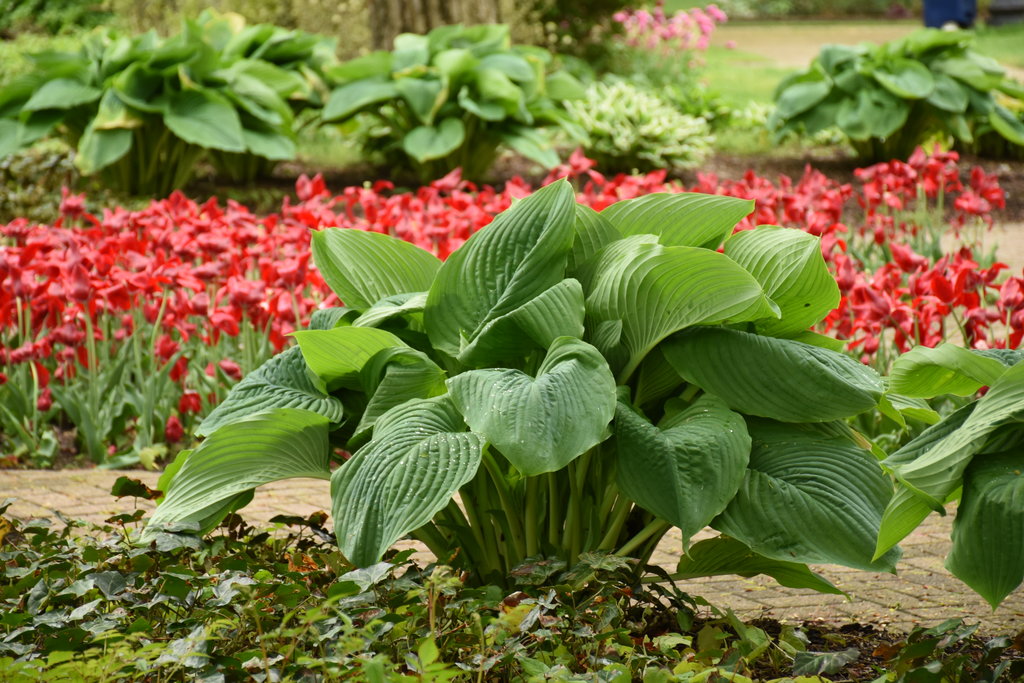Hosta - The Ultimate Growing Guide from Proven Winners®
One of the most popular garden plants, hostas are grown primarily for the attractive foliage that occurs in a range of sizes, colors and forms. This hardy perennial thrives in challenging shady sites where many other plants won’t grow.
Hostas are virtually carefree and come back reliably year after year. Hardy in USDA zones 3-9, this tough plant performs well in most landscapes, even for beginning gardeners.
Foliage occurs in shades of green, blue, white, gold, chartreuse and variegated patterns. Pointed leaves are heart-shaped or elongated, with smooth, pleated or wavy texture that creates depth in the landscape. Flower scapes appear in summer, bearing clusters of trumpet-shaped blooms in hues of white, pink, lavender or purple, with some varieties being fragrant.
These versatile plants are widely useful when massed in a border or along a slope, as a foundation planting or stand-alone accent, in containers, or when combined with other woodland plants. With hundreds of varieties to choose from, you’re sure to find a hosta that suits your personal taste and style.
PLANTING & CARING FOR HOSTA
How to plant: Follow these steps to plant hosta in spring or fall, leaving enough space between plants to accommodate their mature width.
- Loosen the soil in the planting area to a depth slightly deeper and twice as wide as the root ball.
- Mix in compost or other rich organic matter.
- Dig a hole large enough to accommodate the root ball.
- Remove the plant from the nursery pot and tease out roots if potbound.
- Set the plant in the hole with the top of the root ball level with the surrounding soil.
- Fill in the hole with soil and tamp down gently to remove air pockets. Water well.
- Mulch with a layer of compost or shredded bark to retain moisture and suppress weeds.
Soil: Hosta prefers rich, well-draining soil.
For containers: Use a high-quality all-purpose potting mix. Make sure containers have drainage holes in the bottom. The container should be 4-6 inches wider and slightly deeper than the root ball.
Watering: Keep soil evenly moist, but not soggy, and don’t allow plants to completely dry out.
Fertilizing: In early spring, apply a granular all-purpose time-release fertilizer according to package instructions.
Pruning: Trim off dead or damaged foliage and spent flower stalks as needed. Allow plants to die back completely in the fall and clean up leaf debris.
HOSTA FAQ’s
Where do hostas grow best?
These shade lovers are ideal for woodland settings, underneath large shade trees, or along a shady slope or foundation. Hostas can even thrive in containers.
Do hostas like sun or shade?
Most hostas need at least some bright light, preferably morning sun or dappled sunlight. Gold-leafed varieties require more light to bring out the vibrant leaf color. Fragrant hostas such as ‘Etched Glass’ need at least several hours of sun to develop flower stalks. Blue-leafed varieties require the most shade to prevent the protective waxy leaf coating from melting, which results in green leaves. Full sun or too much shade can result in faded coloring. Protect from hot afternoon sun to prevent leaf burn.
Are hostas perennials?
Hostas are reliable long-lived perennials in most regions (Zones 3 to 9). When planted in the right spot and cared for properly, they will come back year after year, often getting bigger and better with each season.
Do hostas spread?
These rapid growers get wider each year and can be divided every 3-4 years in spring or fall. Dig and lift the entire clump out of the ground. Cut into several sections with a sharp knife or shovel and replant.
How big do hostas get?
The largest hosta varieties can grow up to 4 feet tall and 6 feet wide. Miniature hostas may only reach a few inches tall and less than a foot wide. Most varieties are somewhere in between.
What eats hosta leaves?
Slugs and snails are the most common pests that cause leaf damage. Apply slug bait in early spring when new growth emerges and reapply as needed. There are many home remedies as well. Plant varieties with thicker leaves such as ‘Wheee!’ or ‘Wu-La-La’ are more slug-resistant.
Why are my hosta leaves turning yellow?
Yellow leaves can be caused by a number of reasons. These can include too much sun, improper watering, excessive heat or cold, disease, or natural dormancy at the end of the growing season. Make sure to determine the cause in order to successfully treat affected plants.
HOW TO USE HOSTA IN YOUR LANDSCAPE
Hostas make a versatile addition to any landscape. Try some of these ideas in your yard.
- Showcase a single specimen in a decorative container and display it in a prominent shady spot.
- Mass different hosta varieties in shade gardens or along a slope for a mosaic of color.
- Plant in a woodland setting in combination with other shade lovers.
- Add elegance to a shaded patio or deck by planting hostas in containers or as edging.
- Boost curb appeal by planting hostas in shady areas along the front of your house.
- Feature a large specimen in an island bed or underneath a shade tree.
- Use hostas to cover up spent foliage of spring-blooming bulbs such as tulips and daffodils.
- Mass a medium to large variety at the rear of a woodland border as a background plant.
- Lighten up a dark area such as a courtyard or fence line with a variegated or gold variety.
- Use a smaller variety as pathway or border edging.
QUESTIONS? Send them via email to helpdesk@provenwinnersdirect.com and someone from our customer service team will get back to you.
Happy Planting!!










